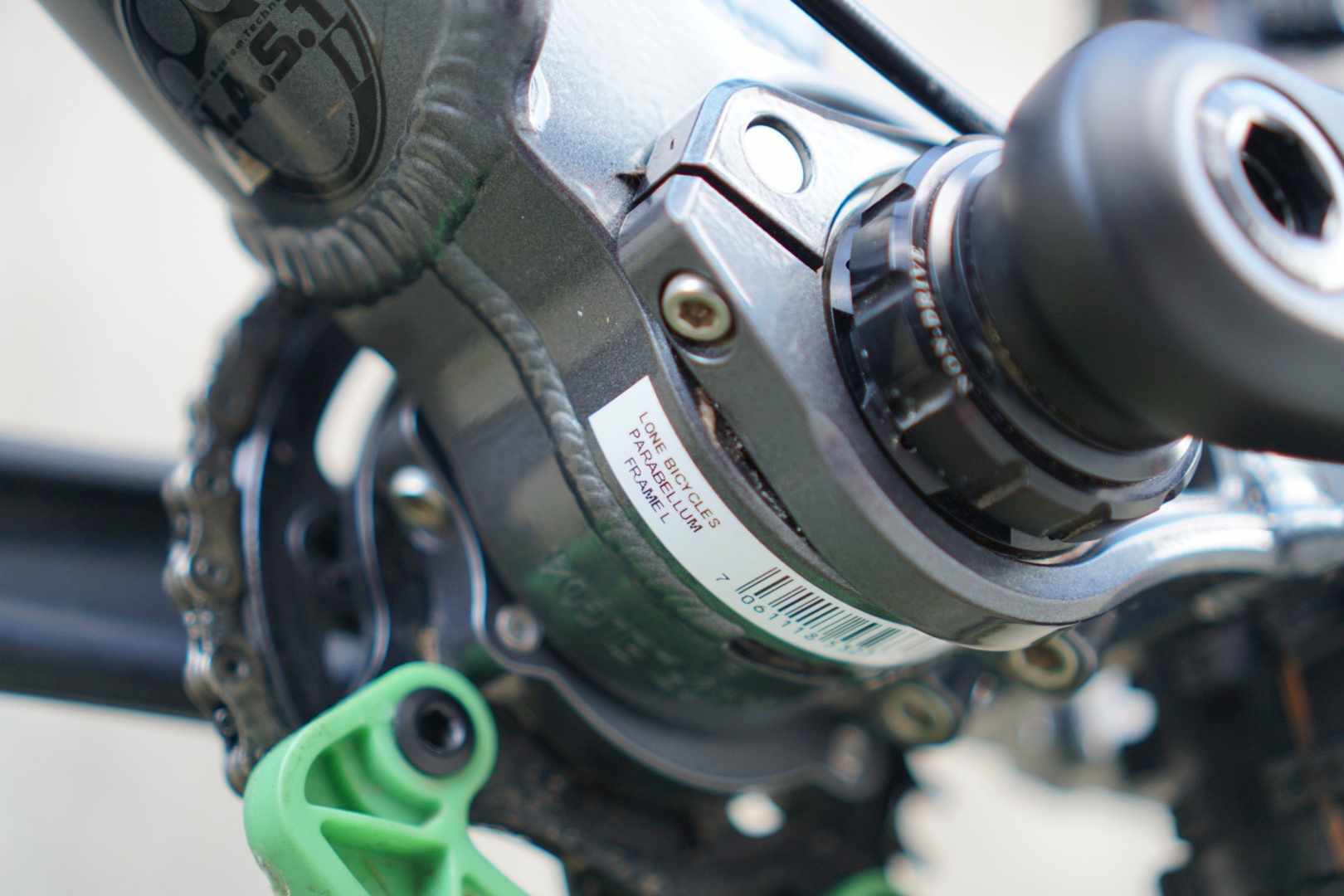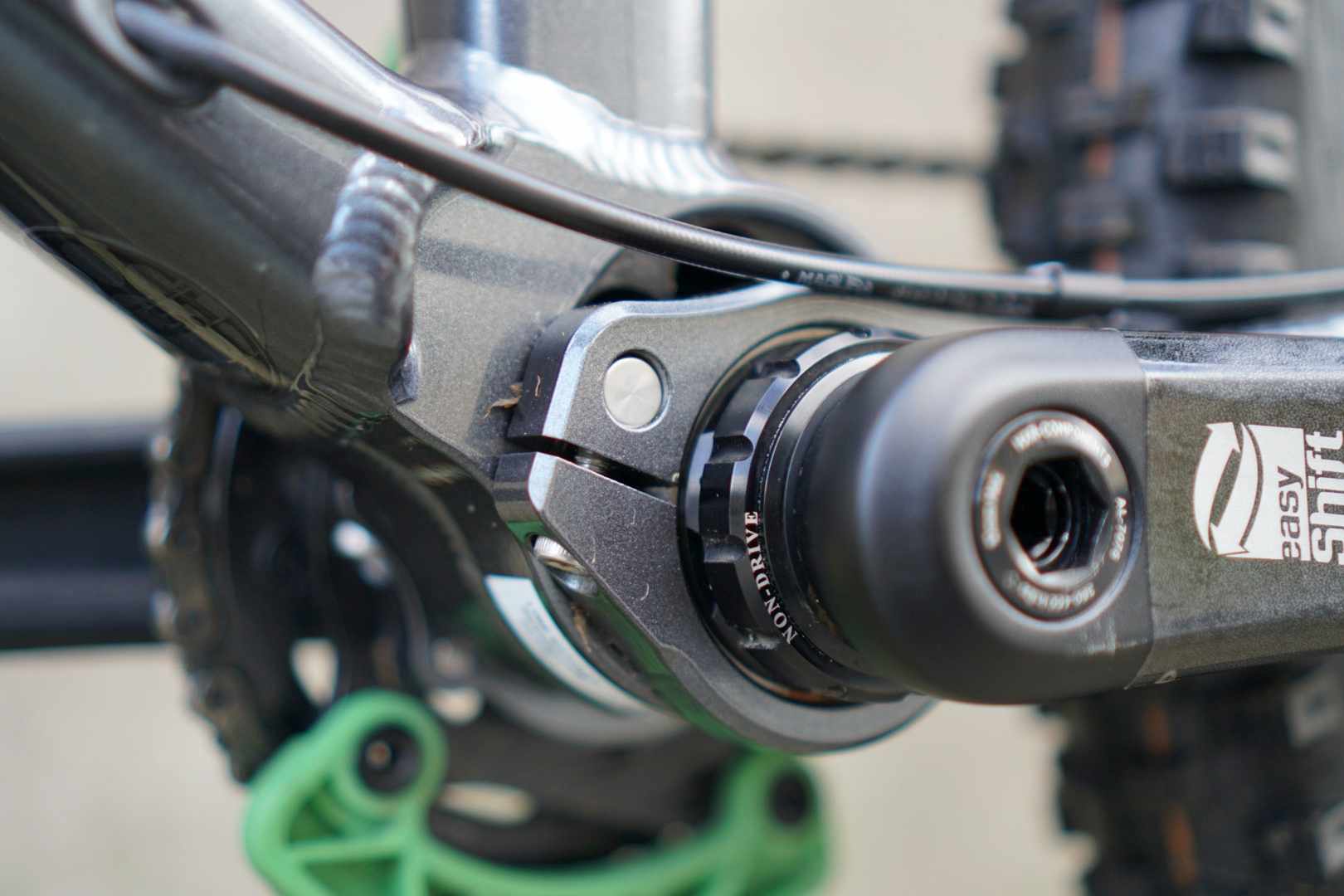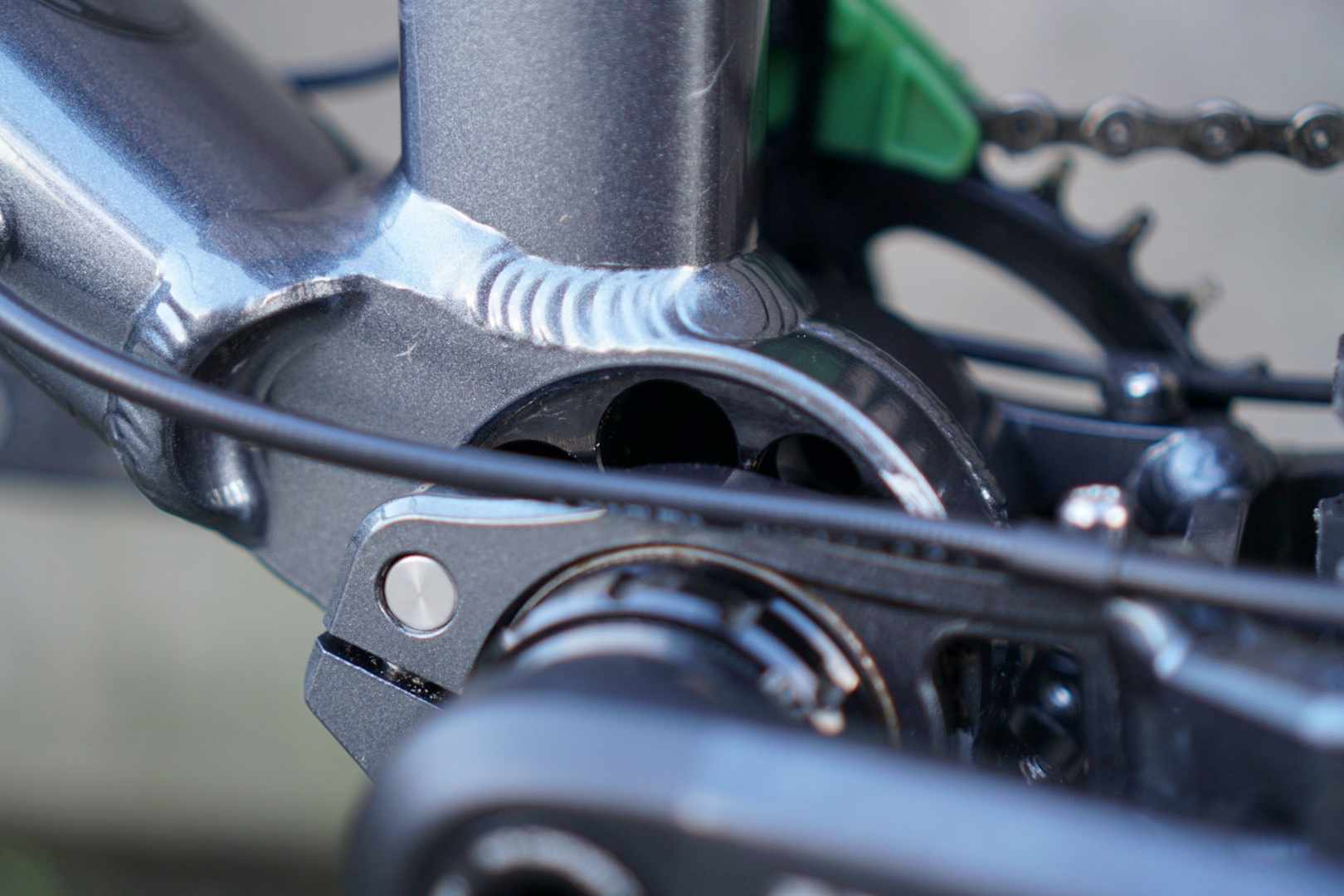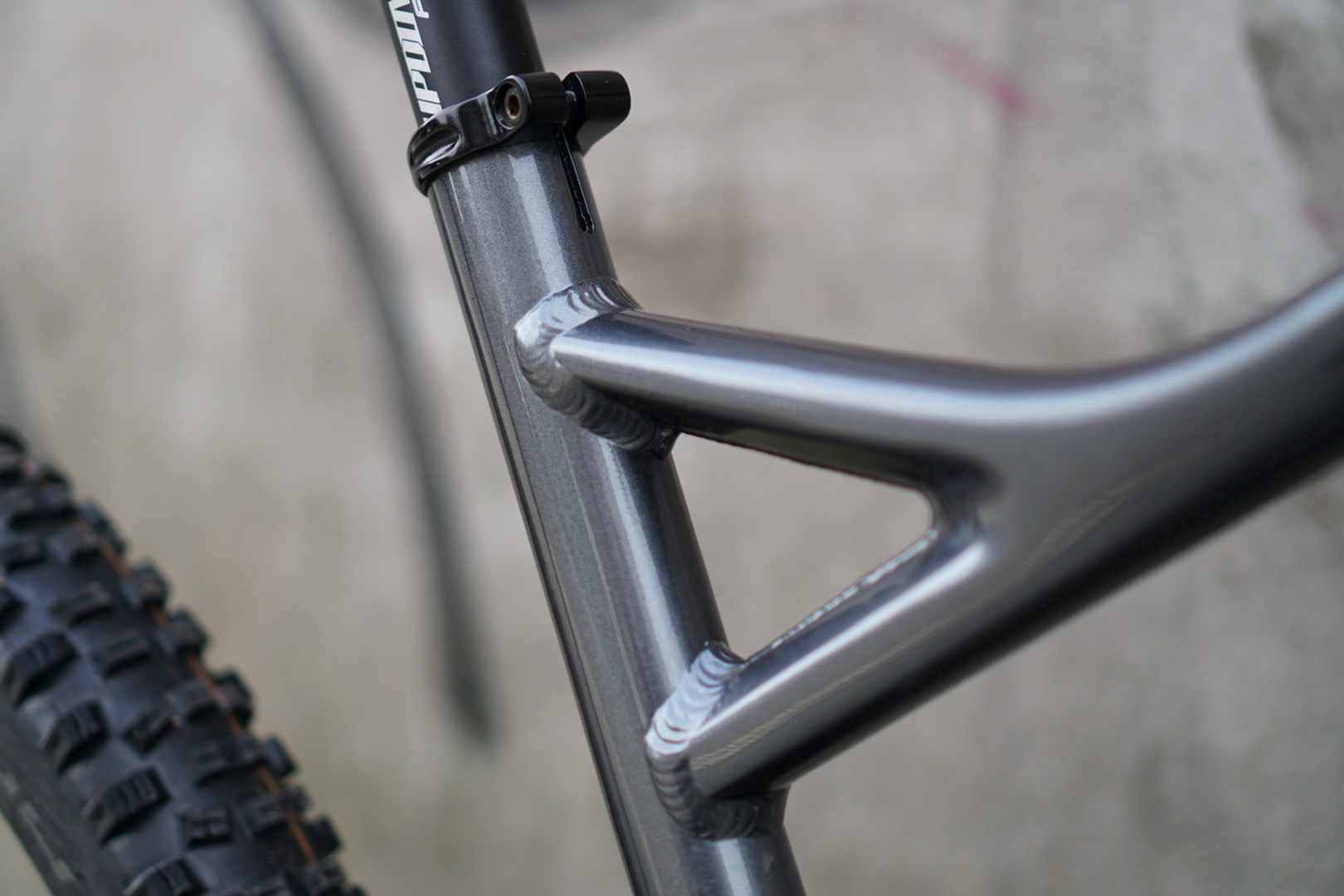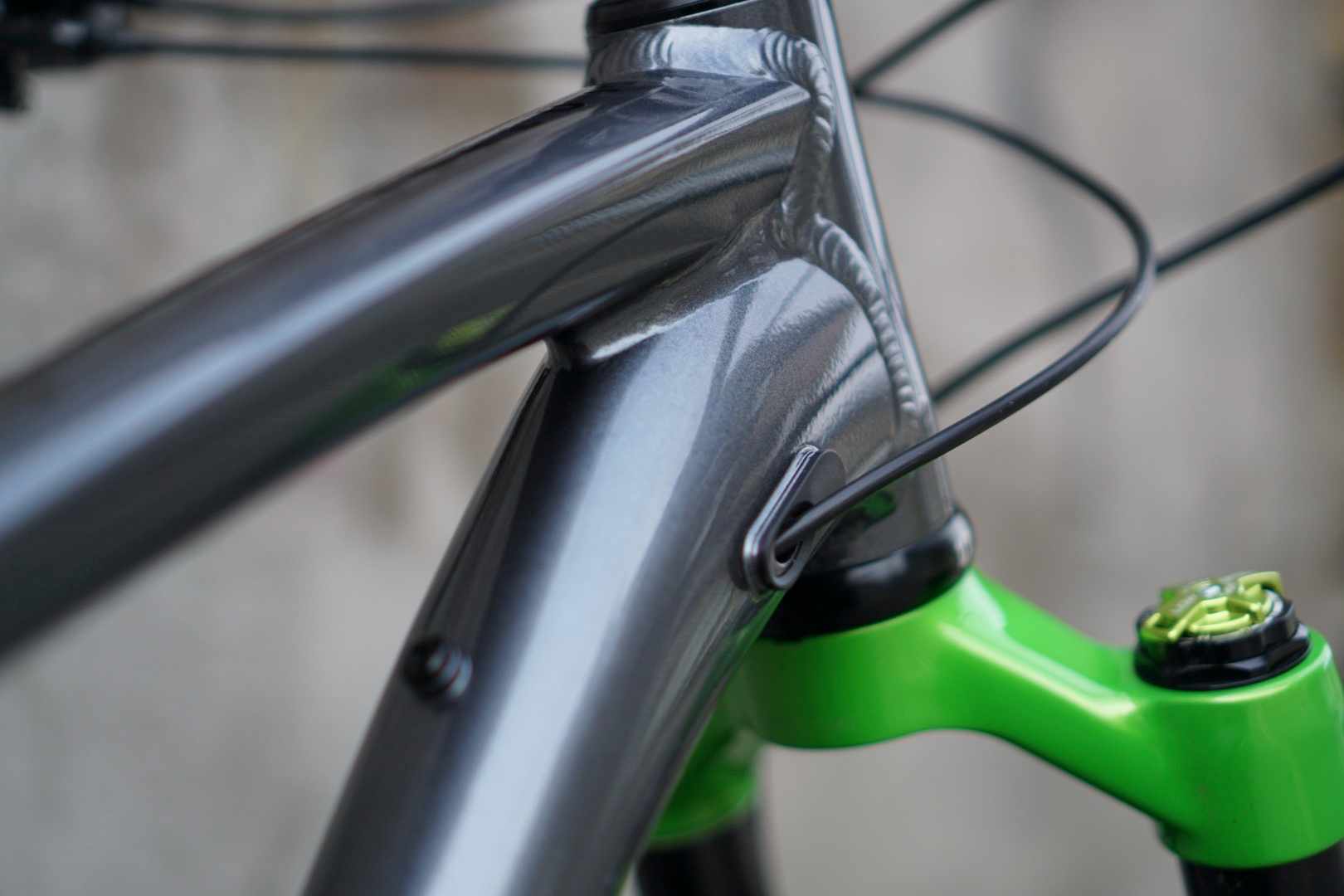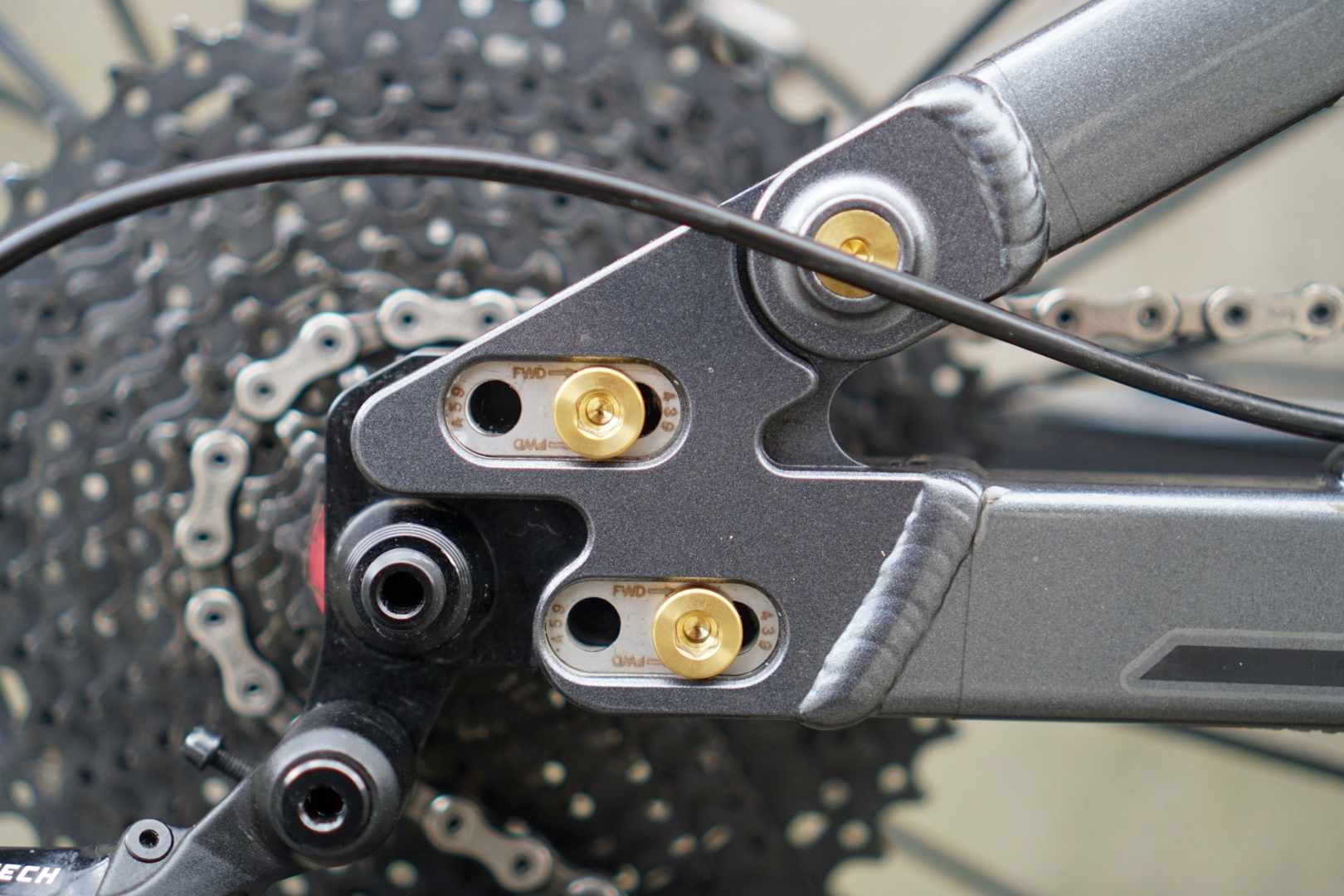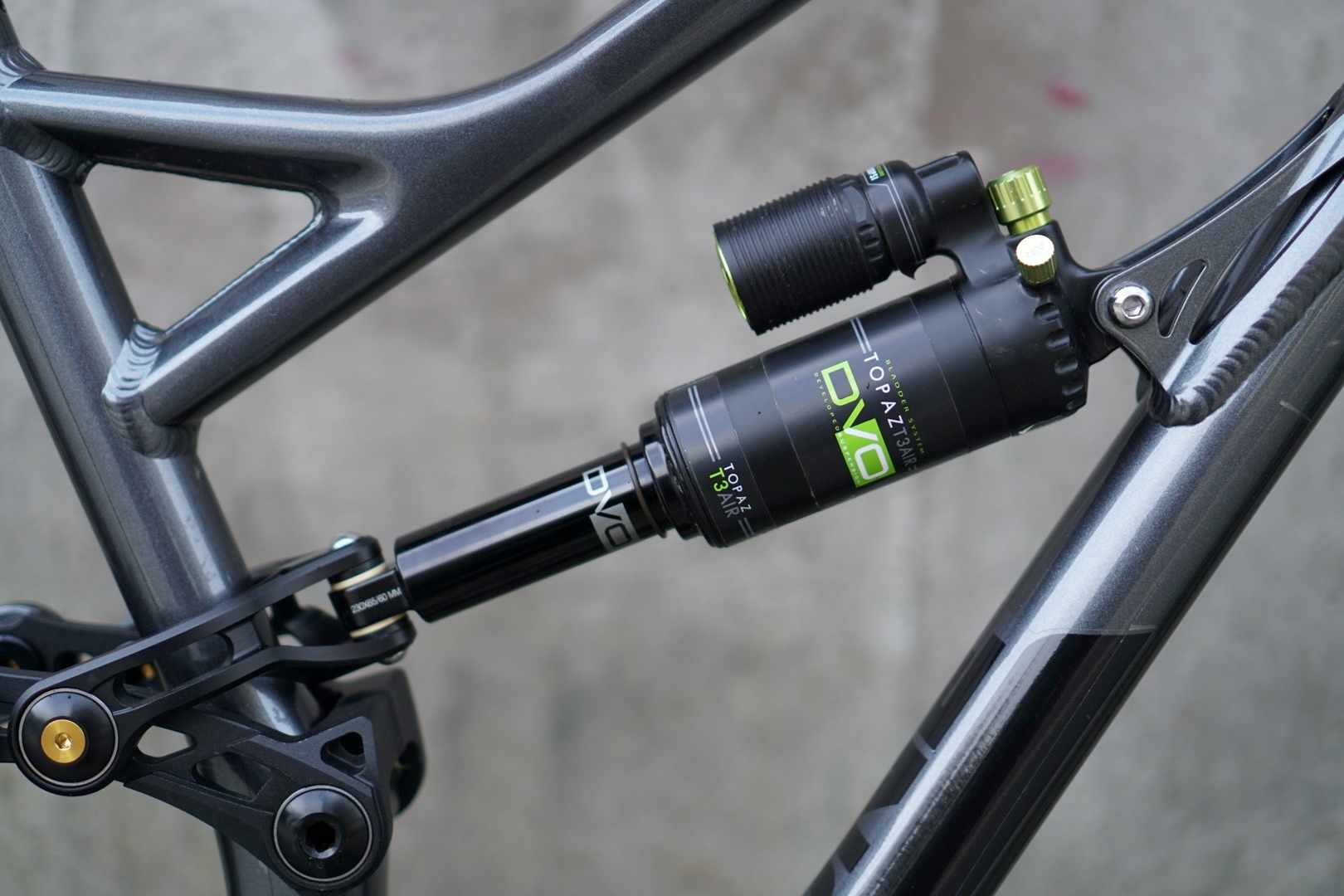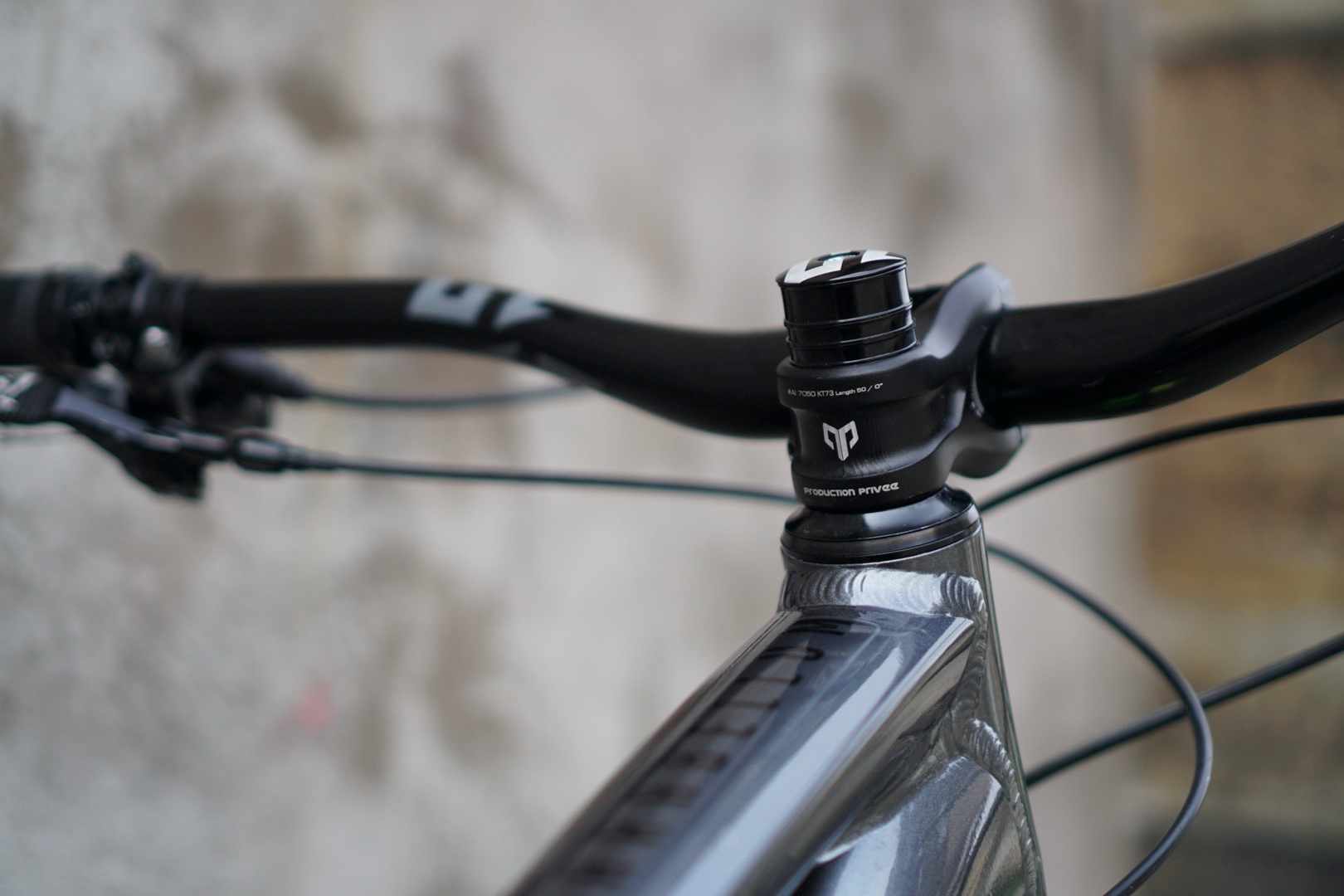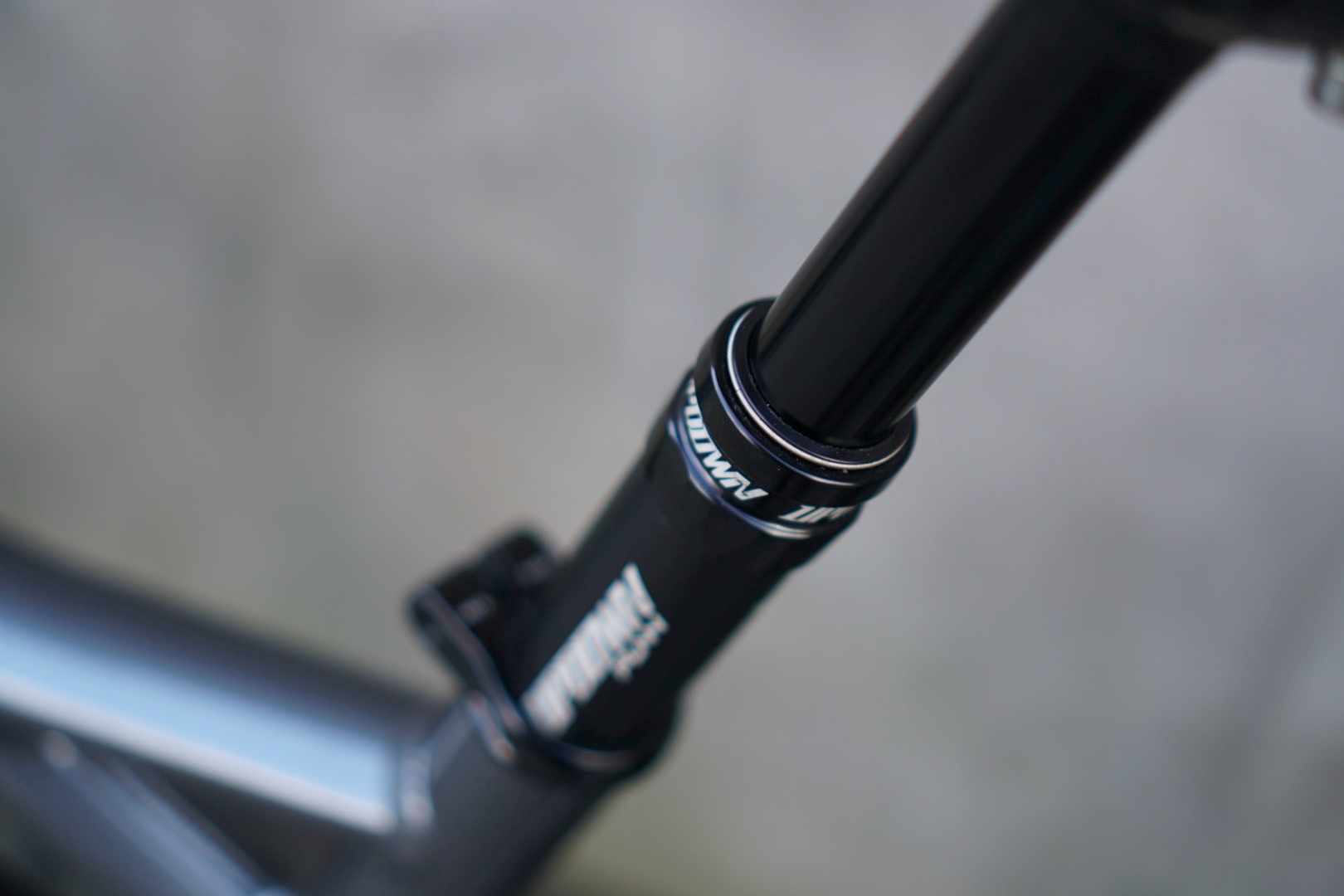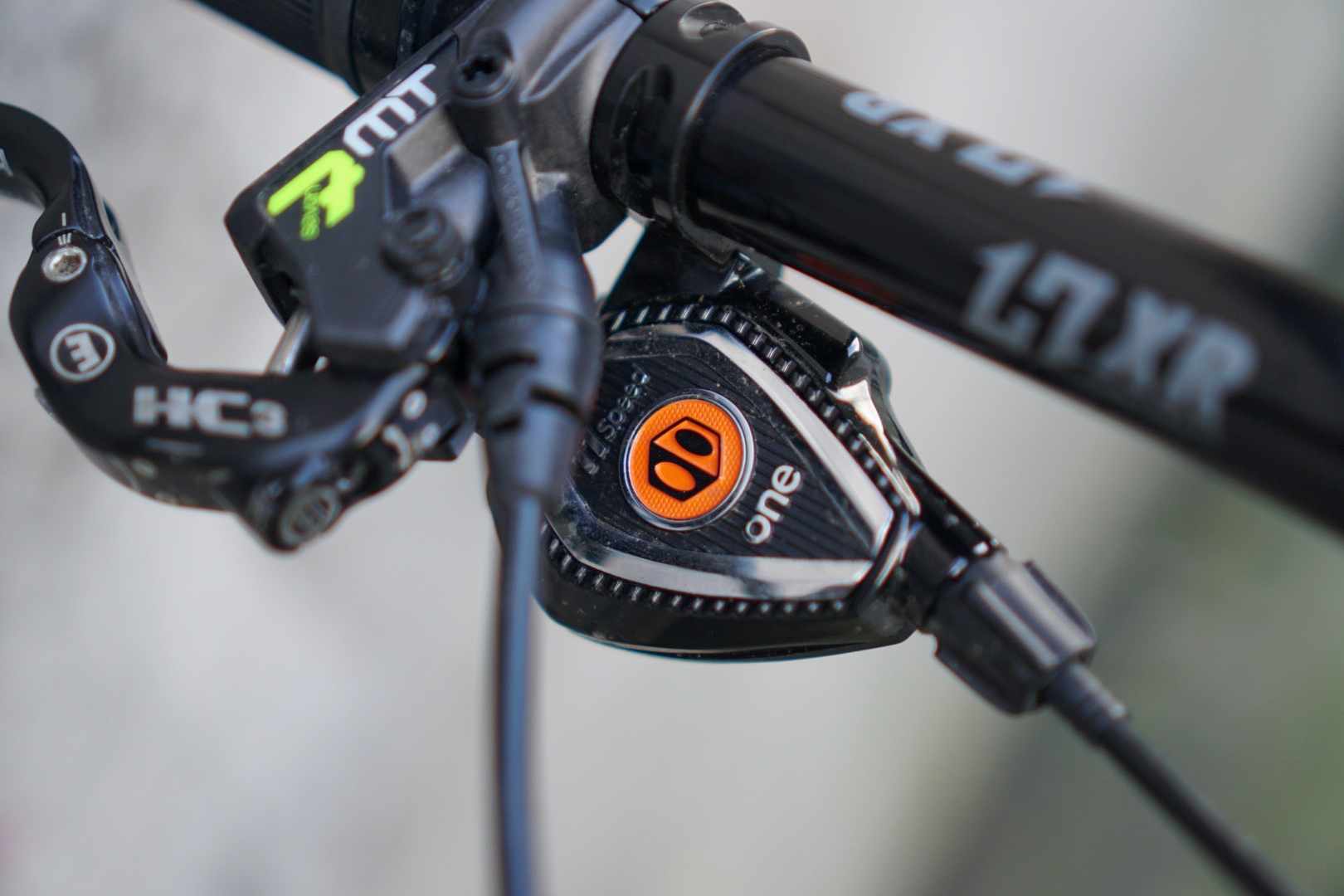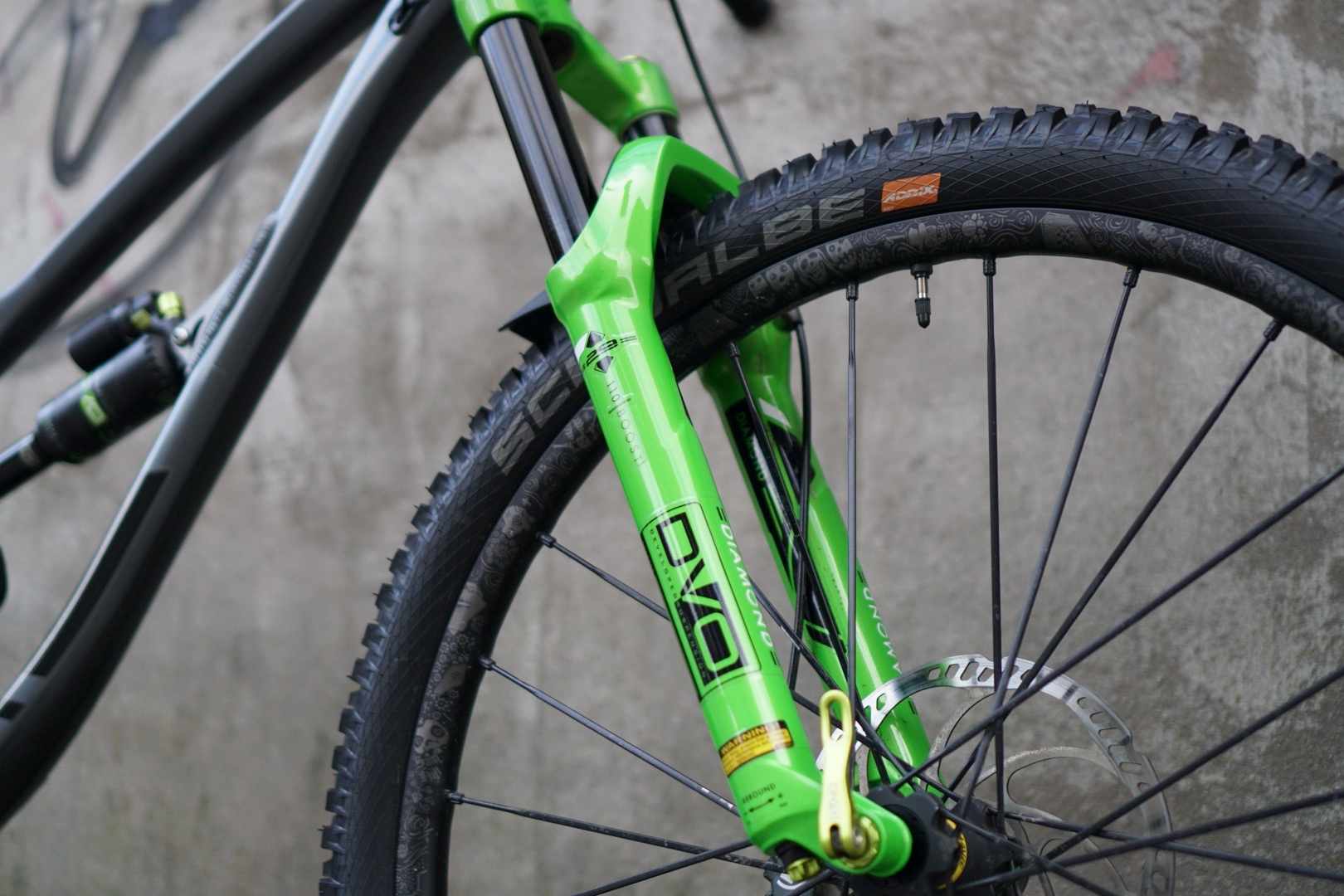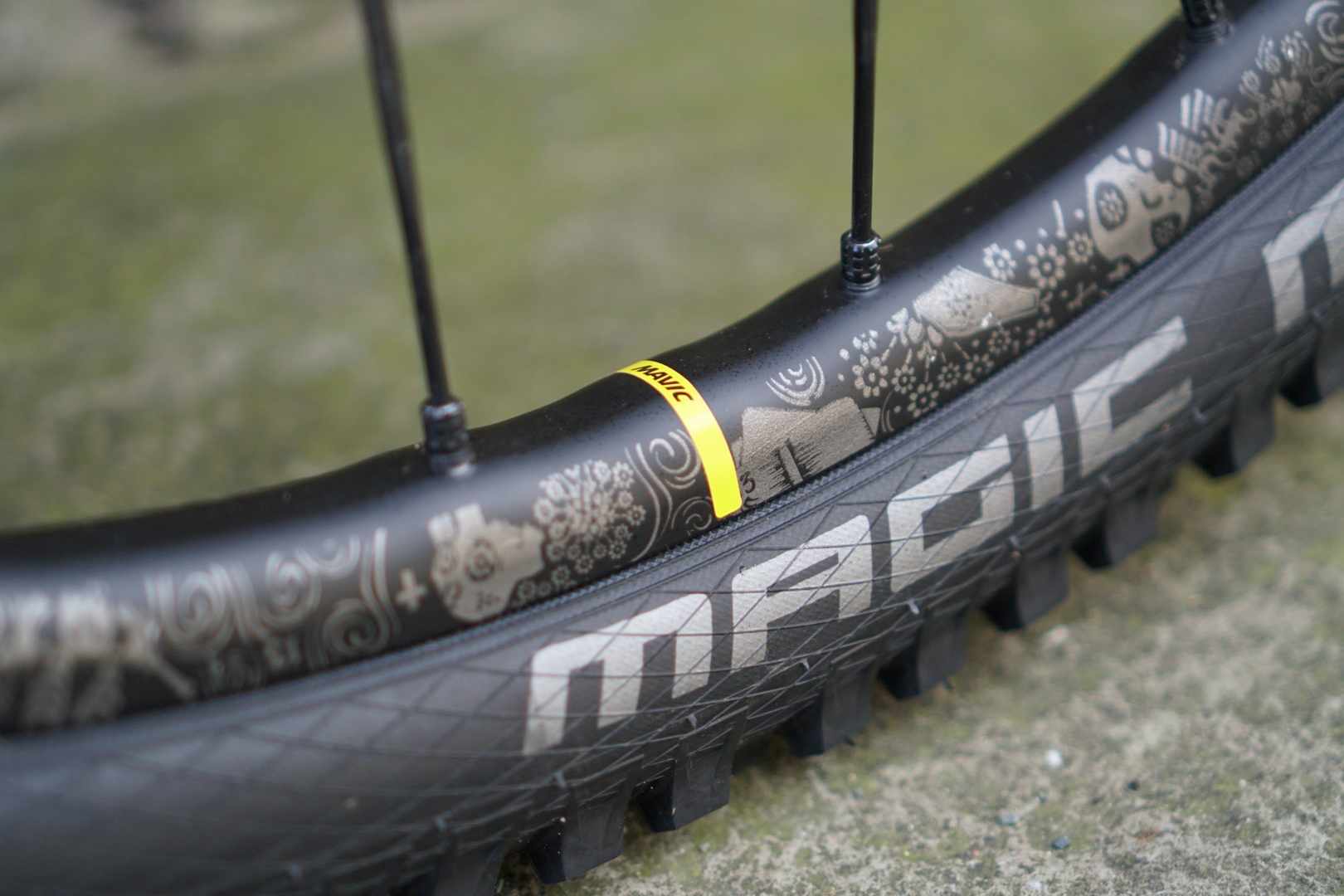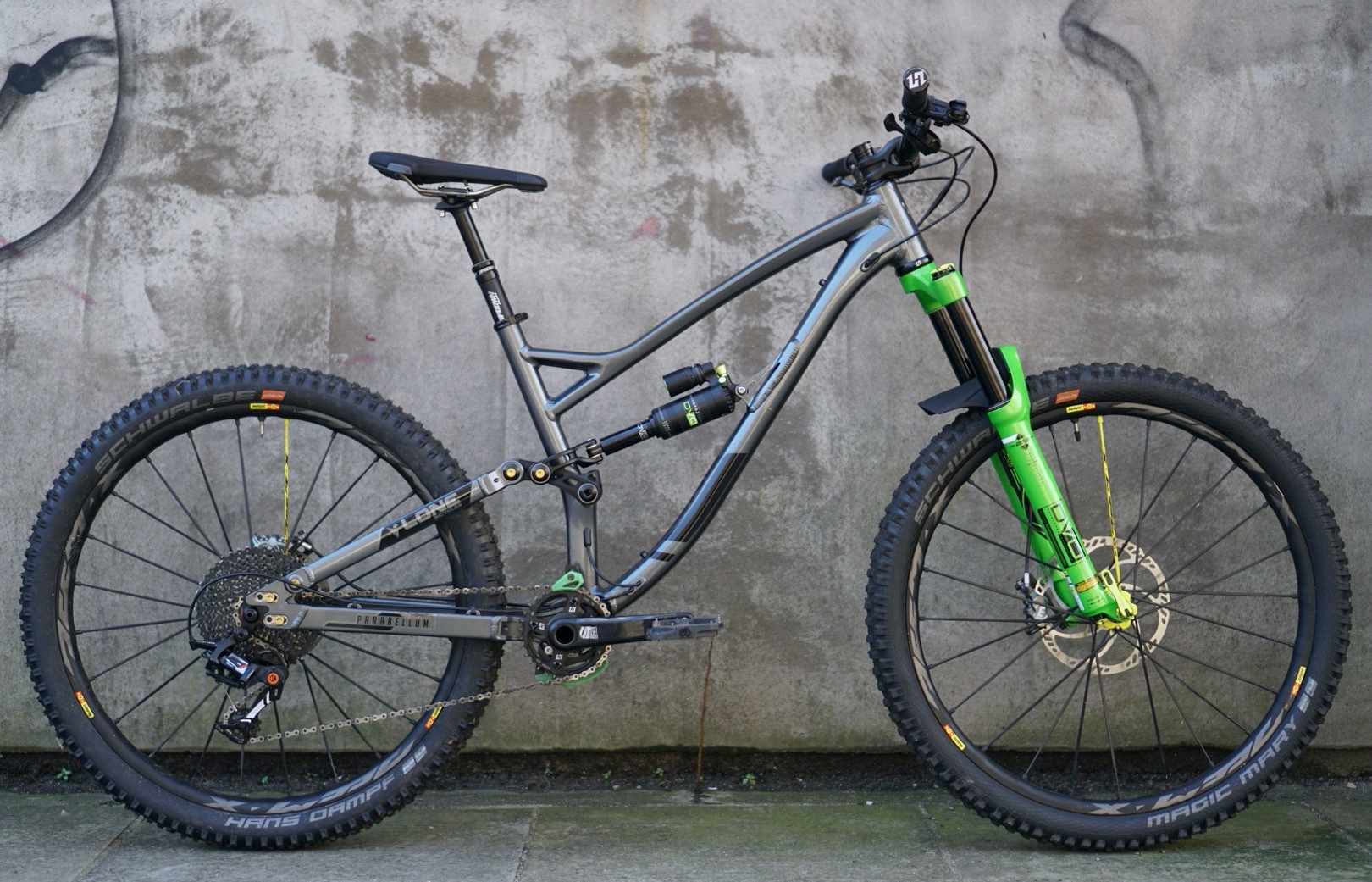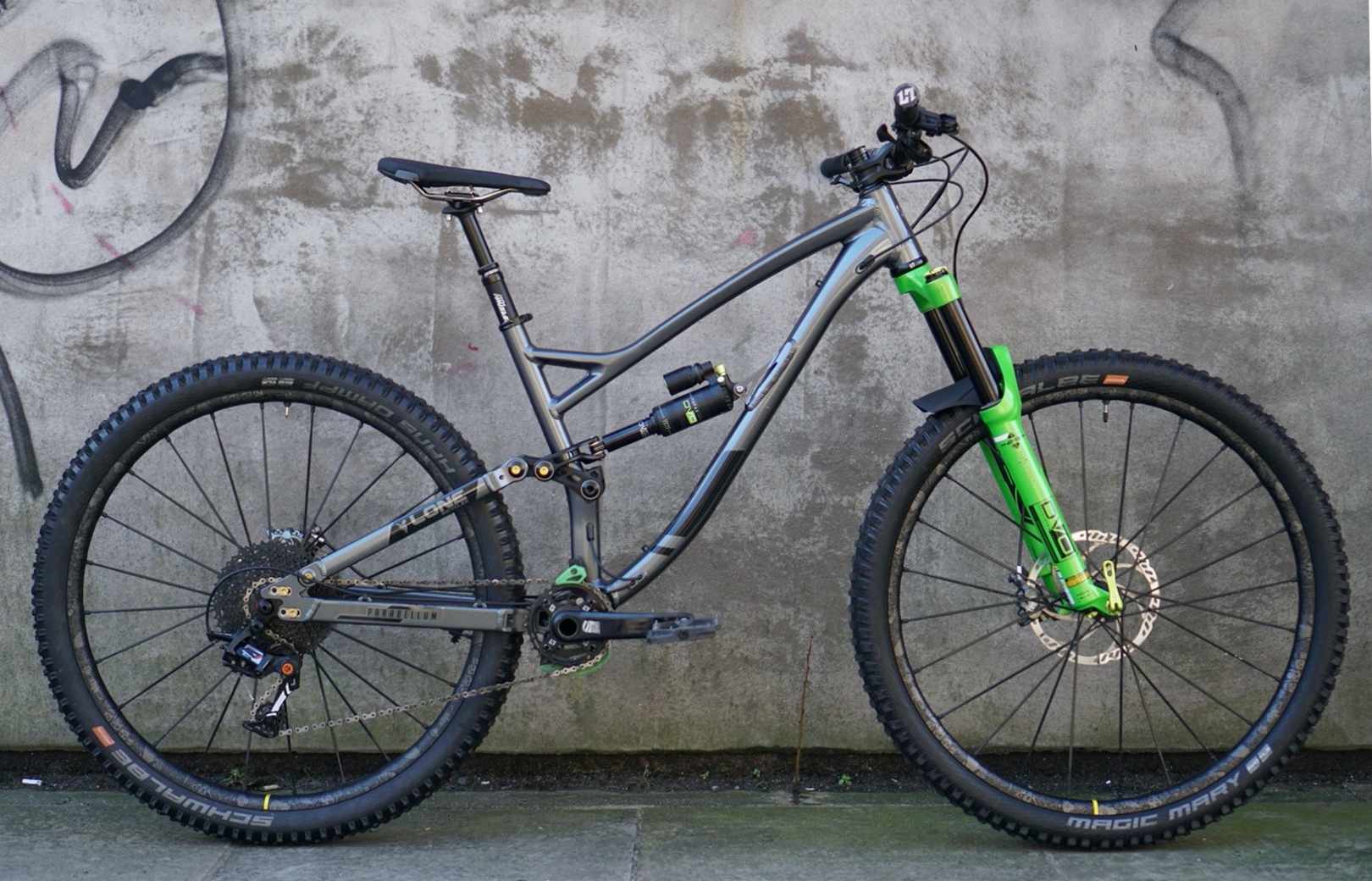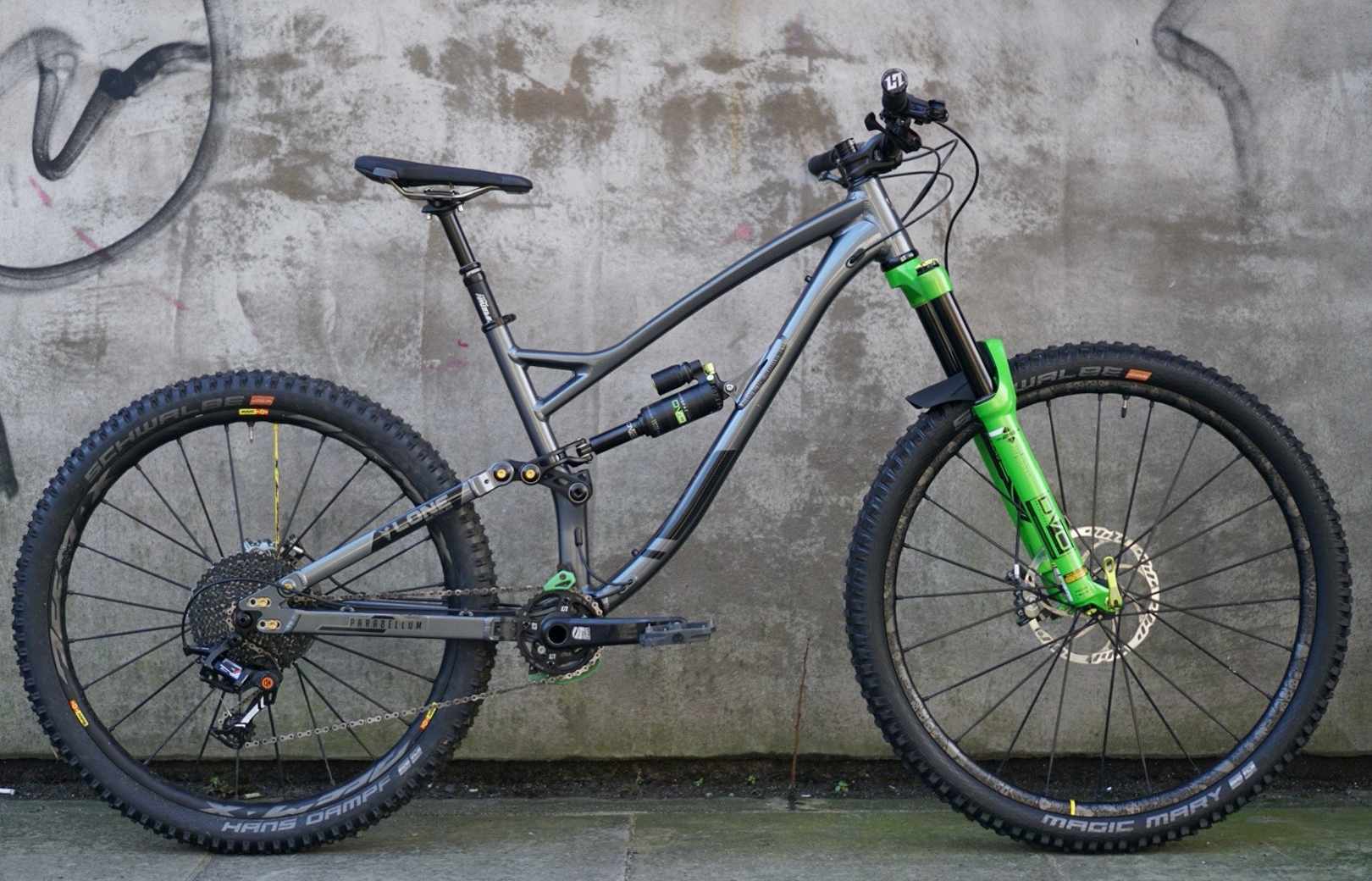Lone Bicycles lent us their refreshingly unique Lone Parabellum to test against the UK finest winter weather.
Romain Olmos is a French mountain bike legend who once shared sponsors with Darren Berrecloth, Anne Caroline Chausson and Neil Donoghue. Known for his stylish 4X wins and downhill racing antics, Romain hung up his racing plates a few years ago to concentrate on building his own brands.
Over the years, Romain had helped to develop disc brakes, and suspension frames for French manufacturers 24Bicycles, so he knows what it takes to design, develop, produce and market a product, but he also knows how to ride too!
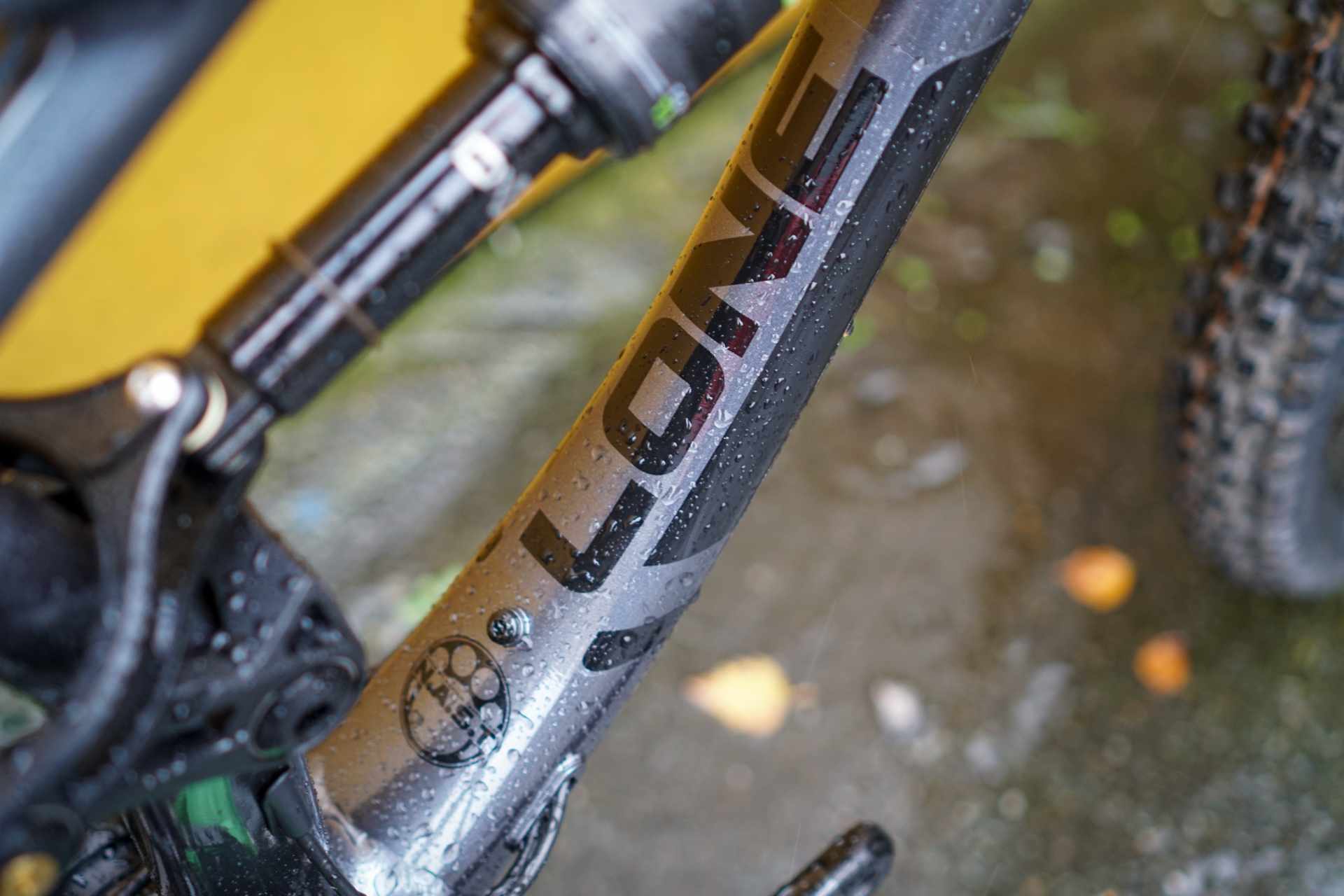
Lone Bicycles is Romain’s mountain bike brand, while HXR is his component company. The chances are pretty high that you have heard of HXR and the brand’s flagship Easyshift chainset. Easyshift is a system that moves the freehub from the rear wheel to the chainset meaning gear changes can be made even when you’re not pedalling. It’s a very versatile product that all-mountain, enduro and even downhill riders love to use. Even the 2020 The Brigade WC team is using Easyshift at UCI races this season.
With the Easyshift system successfully proving that Romain’s out of the box thinking and design solutions work in the real world, he set out to design and build a full-suspension bike that followed the same rules.
I first came across the Parabellum at Eurobike in 2018. At the time the frameset was called the Berretta, due to the concentric BB having the appearance of a bullet chamber. The bike didn’t look too out of the ordinary but the features and use of standards were refreshingly unique, I then spent the next 12 months pestering Romain for a test bike.
A full year later, and another Eurobike meet up, and the Parabellum finally landed at Singletrack Towers. With between 159-163mm of travel and the option to run 29er or 27.5in wheels (or a mixture of the two) the Lone Parabellum competes with several bikes with similar travel of all-wheel sizes, so how does this French fancy handle the trail?
Lone Parabellum – The Bike
The Lone Parabellum has so many neat and unique features it’s a bit of a struggle to know where to start, but I think a good place is N.A.S.T.
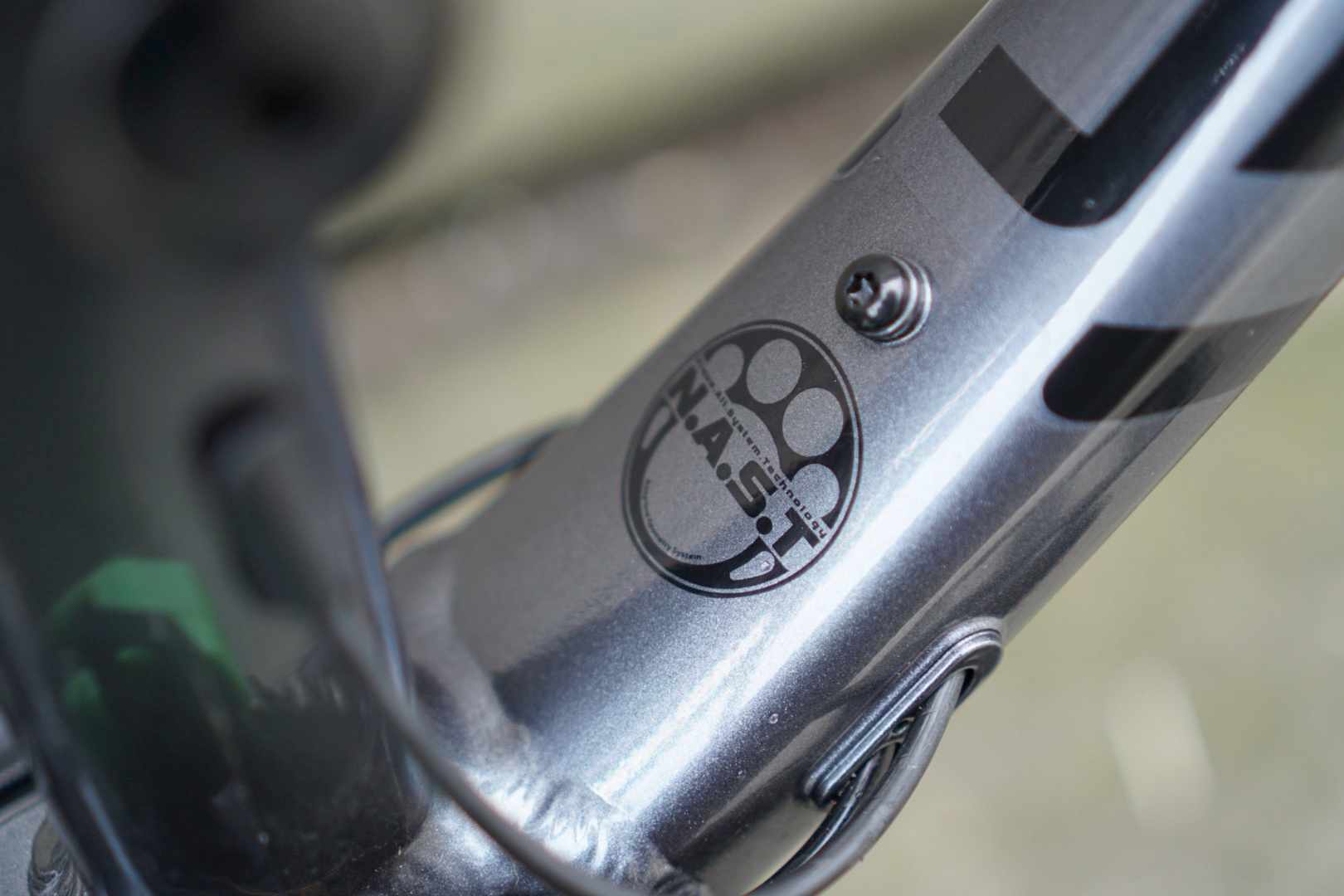
N.A.S.T stands for Nique All Standards Technology, or F$%! All Standards Technology if we translate it. While designing the Parabellum, Romain soon tired of all the new standards so went to great lengths to ensure his frame would be as compatible as possible with most components.
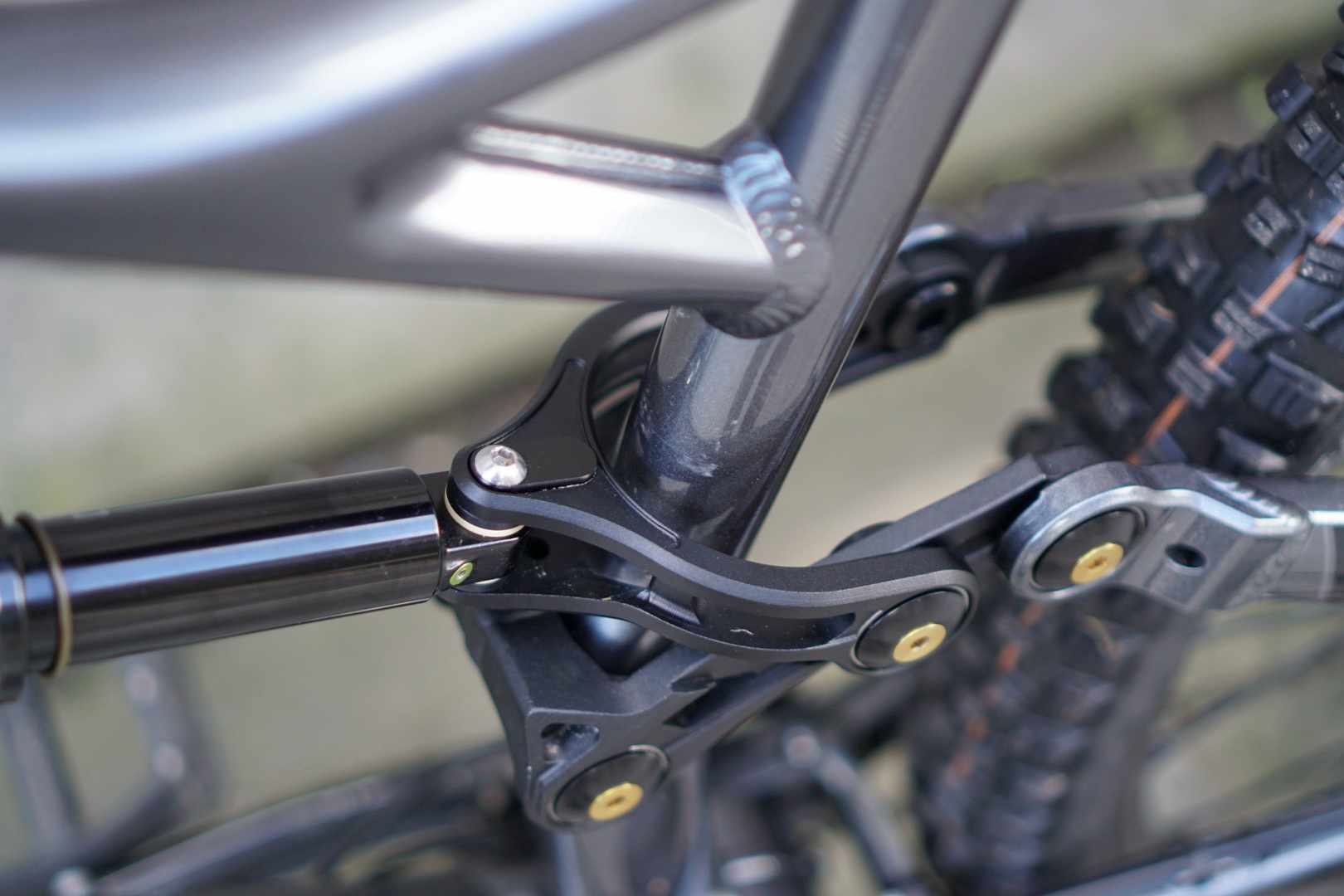
So on top of the ability to switch between wheel sizes, you can also switch between hub standards using the HXR non-Boost to Boost hub adapters. The frame can run either Imperial or Metric rear shocks which also affects the travel increasing it from 159mm to 163mm.
Romain also addressed the hose and cable routing on the frame too. Knowing that some riders prefer the ease of maintenance external routing offers while others like the clean lines of internal, the Lone Parabellum gives riders the choice of either.
N.A.S.T is also key in the way that the Lone Parabellum can move from 29in wheels to 27.5in. On a regular 29er moving to smaller wheels would drop the BB and could cause pedal strikes, and turning a 29er to a mullet bike can cause issues with the seat tube angle and handling.
To counter this, the Parabellum uses a clever main suspension pivot that runs around the BB. The BB itself is a concentric CNC’d component. Loosening off 4 bolts allows this concentric BB to be rotated permitting the bike to be set in a high or low position without affecting the geometry too much.
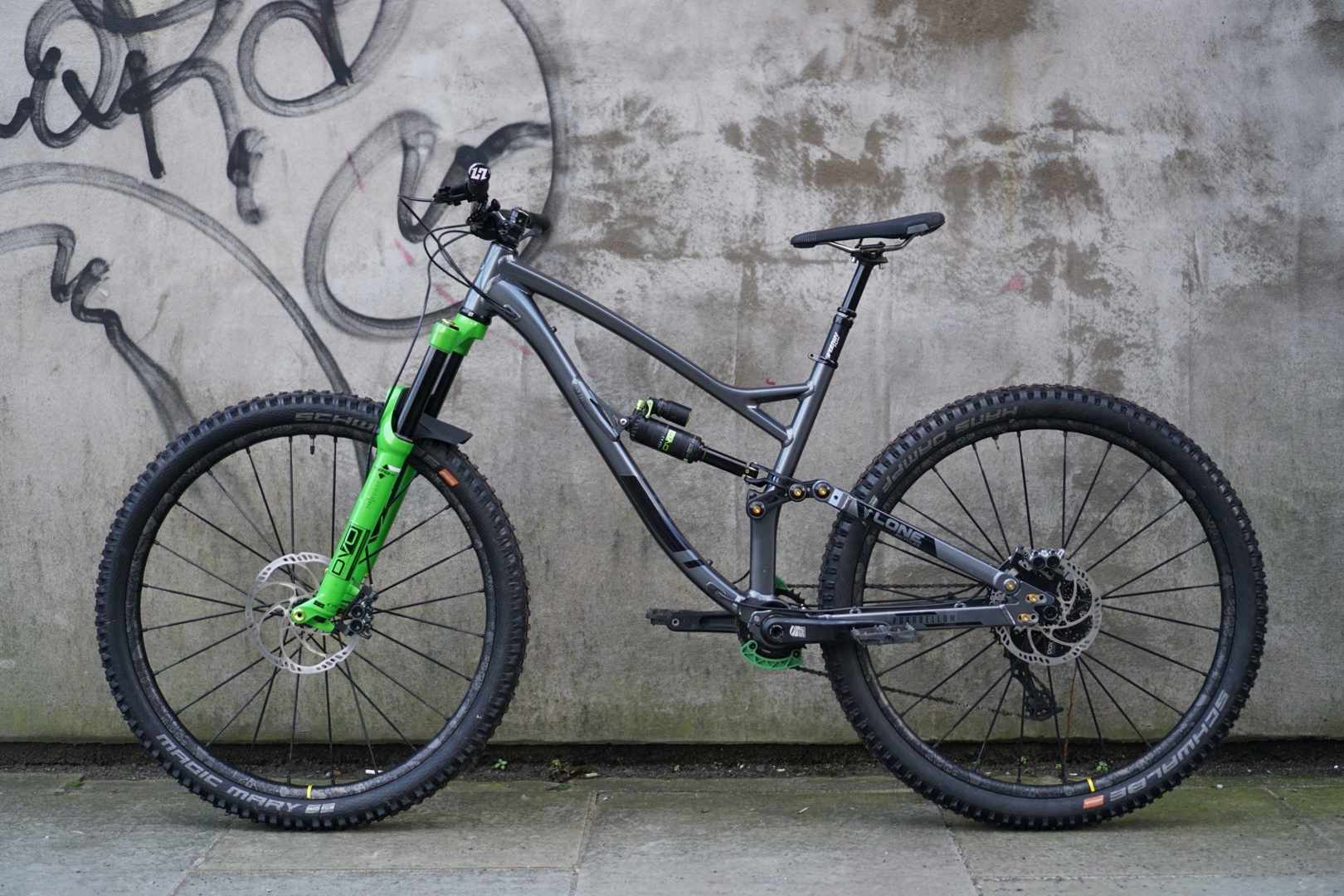
Because the BB rotates freely, it can either be set in high or low or at any position in-between. Perfect for riders who enjoy a constant fettle.
The Parabellum is designed in France and manufactured in Taiwan, and the quality of the build and attention to detail to finish is impressive, to say the least. The machined sliding dropouts and laser-etched labels are a touch of class.
The same goes for the quality of the welds, paintwork and overall finish. It’s clear that Romain wanted the Parabellum to look and feel premium and it does in every way.
Lone offers the Parabellum in sizes small, medium, large and XL. I opted for the size large which has a reach of 449mm and a seat tube length of 445mm when built with 29in wheels. Compared to the bikes I am used to riding, the large Parabellum measures up a little short and the XXL length of 472mm sounds much more appealing, however, a 480mm seat tube length and my short legs put me off that idea.
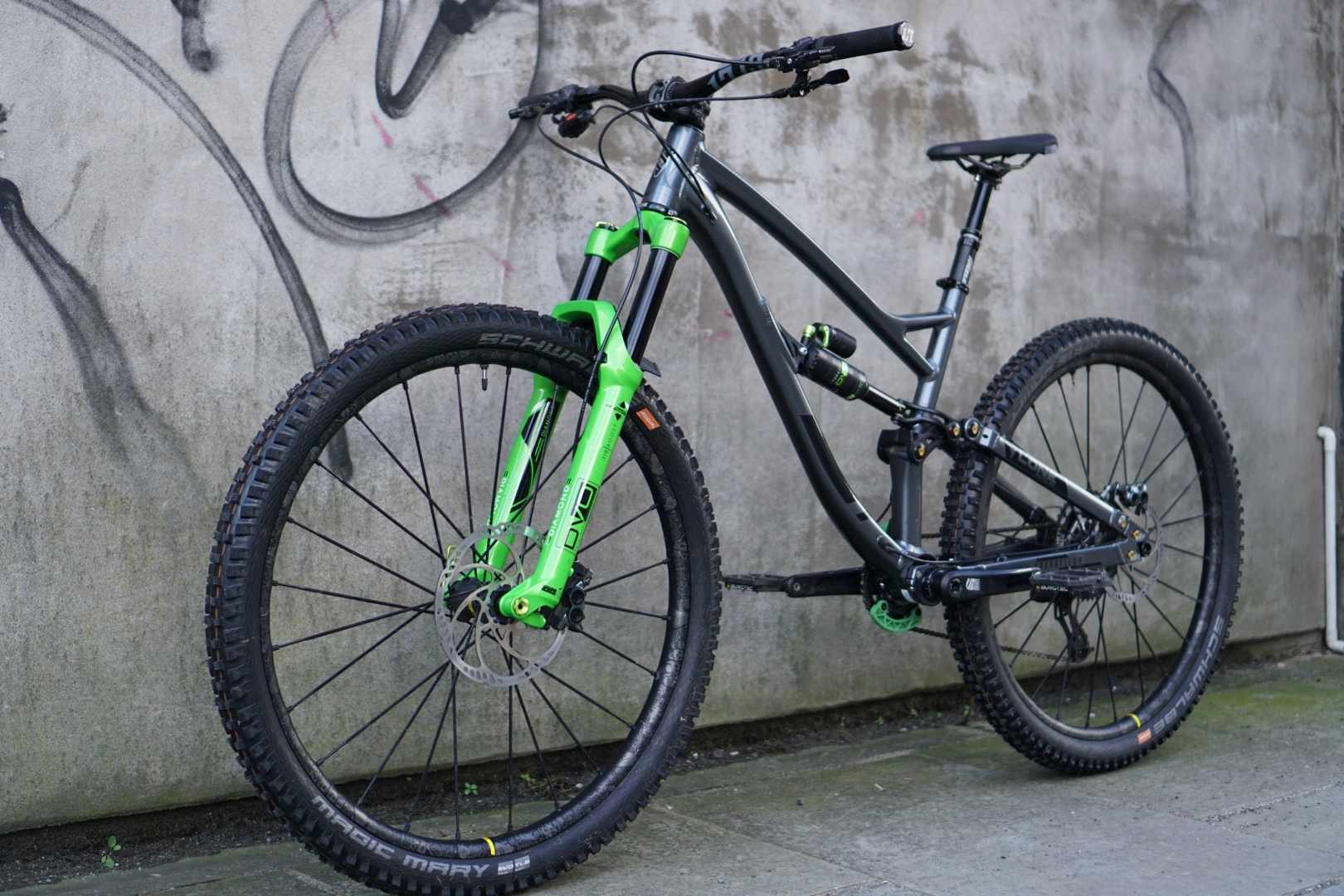
If set as a 29er the Parabellum has a head angle of 65.6 while the seat angle is 75.3. When built up in tiny wheel mode the head angle changes very slightly to 65.5 while the seat angle moves to 74.8.
As there is adjustment on the dropouts, the chainstay length varies from 439mm to 444mm which equates to an overall wheelbase of 1223mm – 1226mm based on our size large test bike.
If you’re up on the latest geometry trends then you might feel that these numbers are a little on the shorter side, and you would be right, but considering Romain’s 4X background it makes a lot of sense and hints at an agile handling bike rather than a rock-solid stable downhill descending machine.
Our test bike came built up with a really nice pick of quality components, from the DVO Diamond and Topaz suspension components, Production Privée stem, to the novel HXR Easyshift chainset.
The Lone is definitely a bike for riders wanting to be individual and instead of going for an SRAM or Shimano drivetrain, Romain has spec’d a Box 11-speed transmission, Magura brakes and 2 pairs of Mavic wheels.
Speaking of Mavic, the French wheel maker is one of the brands that actually supports the Easyshift system. Because the freewheel is on the chainset with the HXR product, the standard freewheel needs to be locked in position. Mavic has tested this and is so confident that it won’t cause an issue that they will honour their warranty when using the system.
Lone Parabellum – Set up
The Parabellum came to us with 2 sets of wheels so we could test the bike in 3 different configurations;
- 29er
- 27.5in
- Mullet
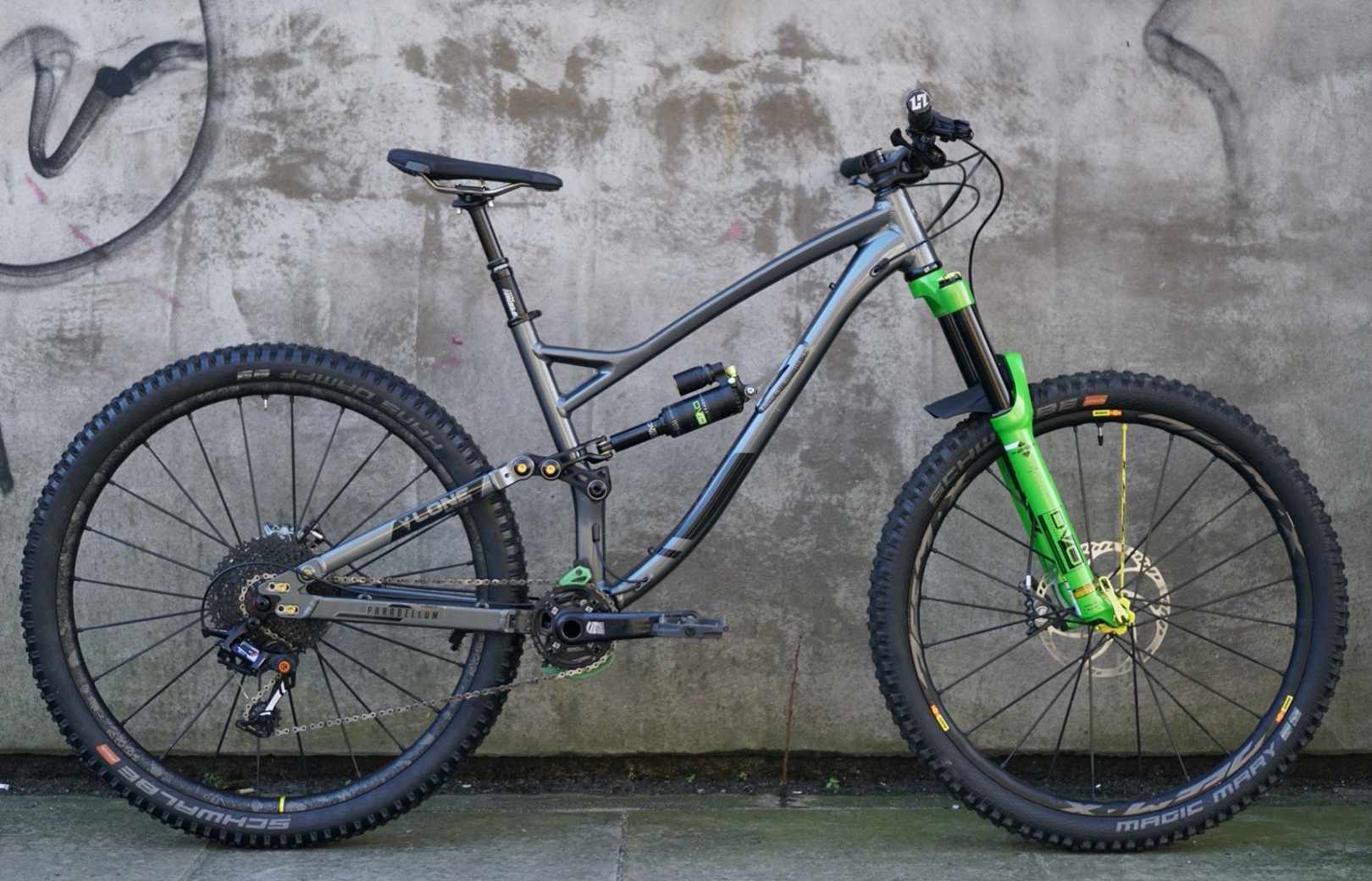
And you answer your question, Yes, we did build it up with a 29er out back and 27.5 up front, but we didn’t ride it like this.
To be on trend with what the downhill world is doing, I first went for Mullet mode, and for ultimate handling, I also chose to run the BB in its lowest position.
Adjusting the BB height with N.A.S.T is very easy, and if you really wanted to you could adjust this on the trail in a couple of minutes. But moving between Mullet and matching wheels requires a little more thought and planning.
In mullet mode, the seat angle is slacker and to compensate you have to drop the nose of your saddle and adjust the seat height. I also played around with the bar height too, eventually opting for the lowest setting.
I know it sounds obvious but, moving to dual 29er means undoing some of the above adjustment, simply popping in the larger wheel won’t do.
Lone Parabellum – The Ride
Before the Parabellum arrived with me, Romain had taken down my details and set the suspension so I could get out and ride right away. The thing is, Romain is a really good rider and like top riders, they tend to ride their fork a little stiffer than I like it.
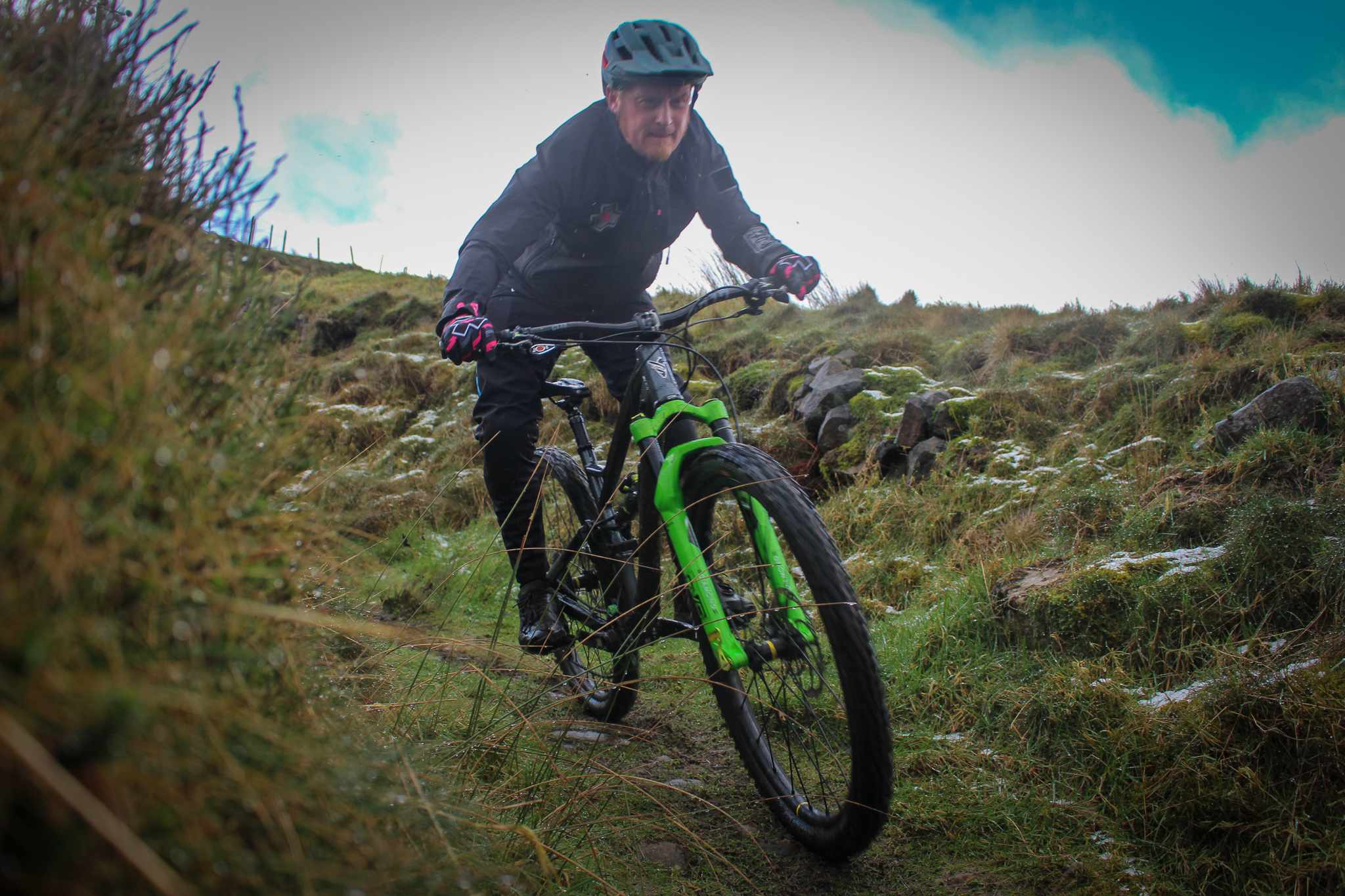
So with a little fettling performed on the fork to make up for my non-pro strength arms, I set off on the Parabellum in Mullet mode with the BB set in low.
My first ride was around a local wood that has a few short steep rooted climbs, a couple of very steep chutes and a few small jumps dotted about here and there.
First impressions were a bit of an eye-opener. The shorter reach and narrower bar certainly helped with moving the Lone around, but after years of riding longer and slacker bikes, it took a little getting used to.
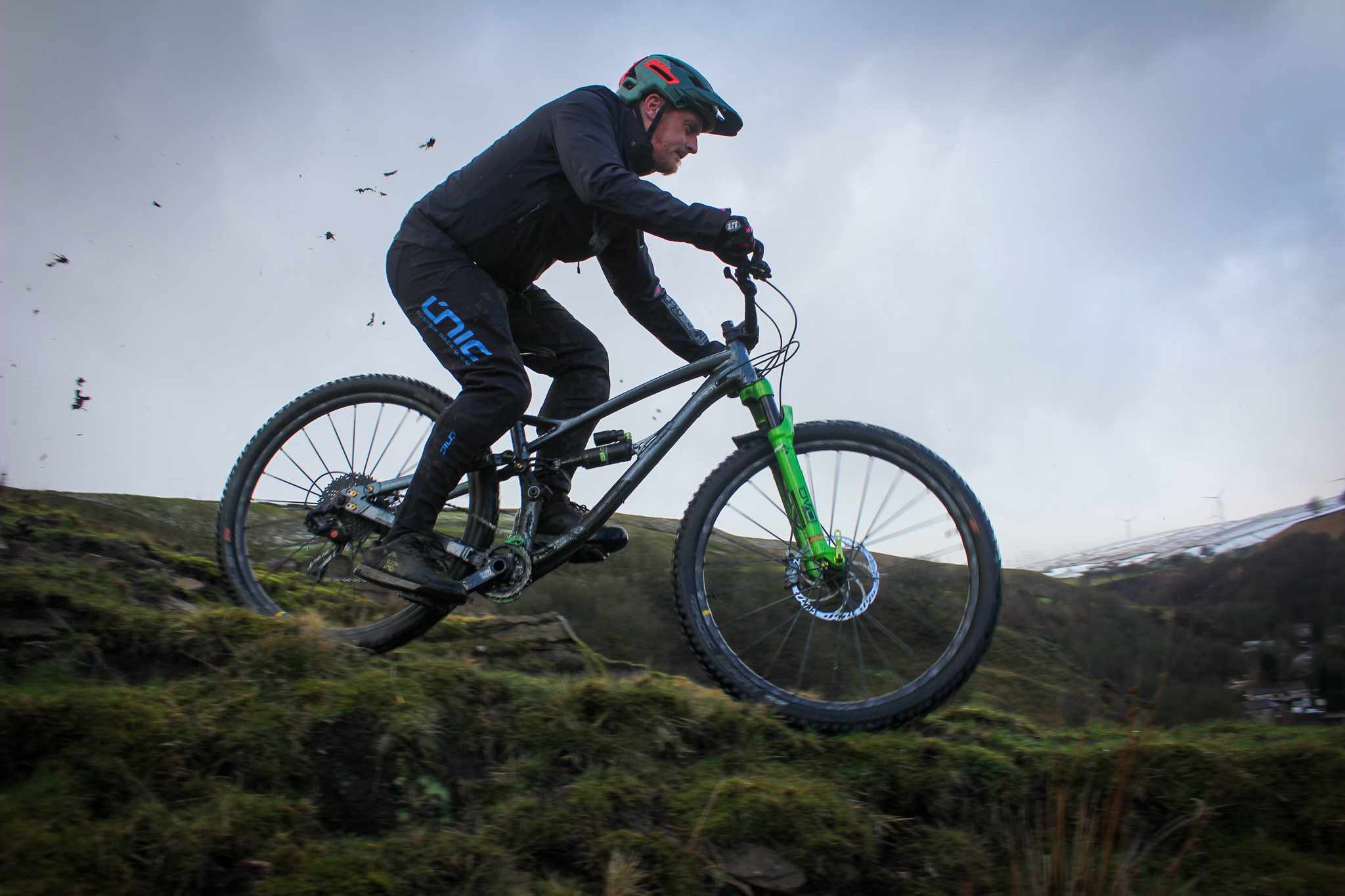
My first sprint at a set of doubles was also a surprise. With the BB set in low and the smaller rear wheel, I was clipping obstacles on a fairly regular basis. I also noted a significant amount of pedal bob when out of the saddle and charging at lips.
The bob is a characteristic of having the main suspension pivot rotate around the BB. On the plus side, the suspension system does offer a great amount of comfort and grip, but it also means you have to use the compression lever on the rear shock a lot more often than I was used to.
On most of my bikes, I tend to leave the shock wide open, but the Lone requires a flip of the lever to get the most out of the rear end. Climbs require the firm setting, the middle setting is for flow trails where you might sprint at jumps and wide open is just for descending on rough natural tracks.
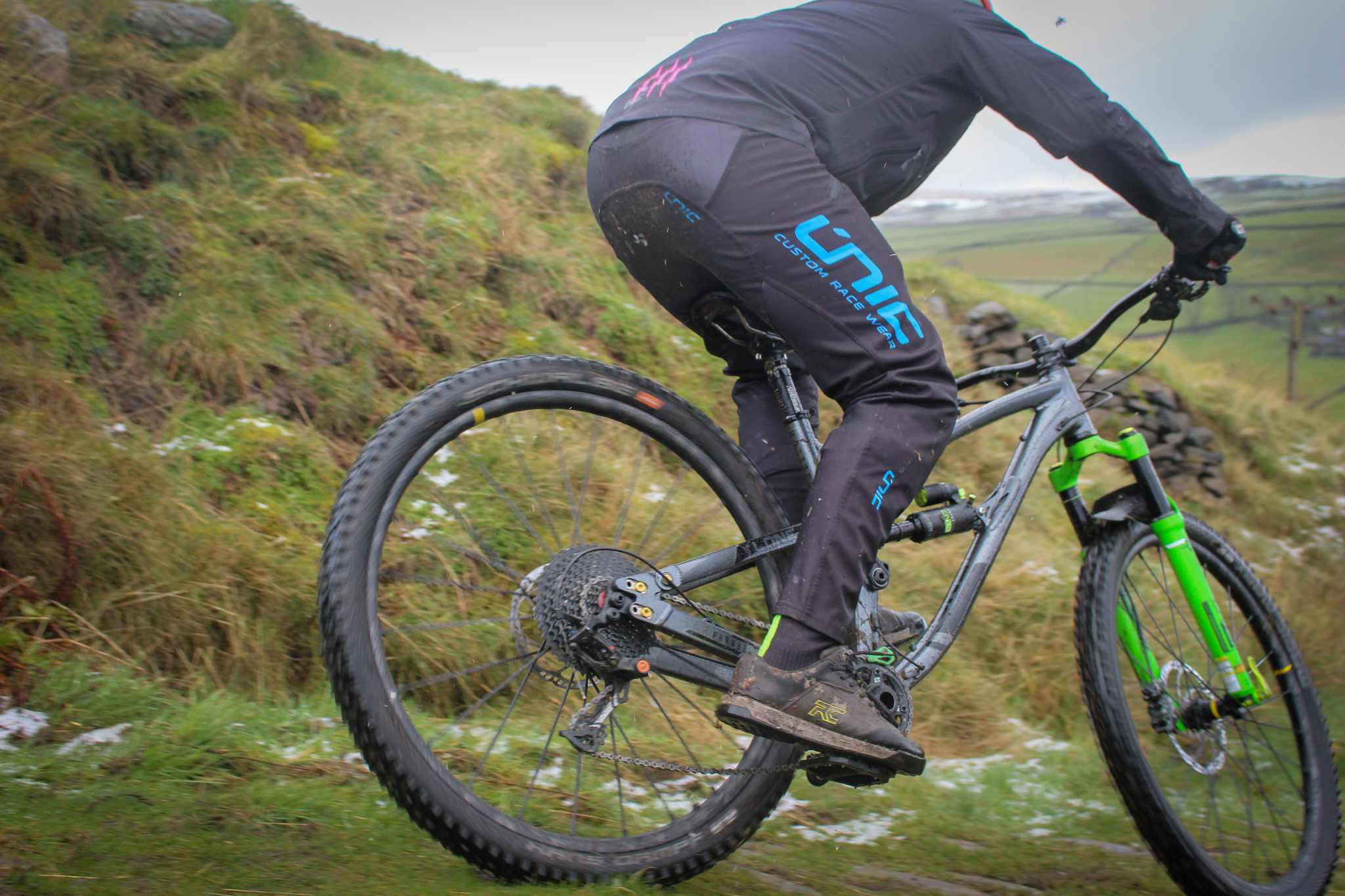
Keeping this in mind, and after raising the BB a little, I headed out again.
This time the Mullet mode Lone and shorter geo really did feel more like an agile 4X bike rather than the longer enduro machinery I’m more accustom to riding these days. The mix of smaller rear wheel and large front made for great cornering and direction change. For hitting short forest trails with sharp hairpin turns and rutted tracks the Lone felt fast and fun.
As much as I like sessioning in the woods though, most of the good spots I ride at require a ride in and out of those places, and I found the Lone handled distance riding much better when built up with 29in wheels front and rear. So with the larger wheel in place and my saddle readjusted I headed out once again.
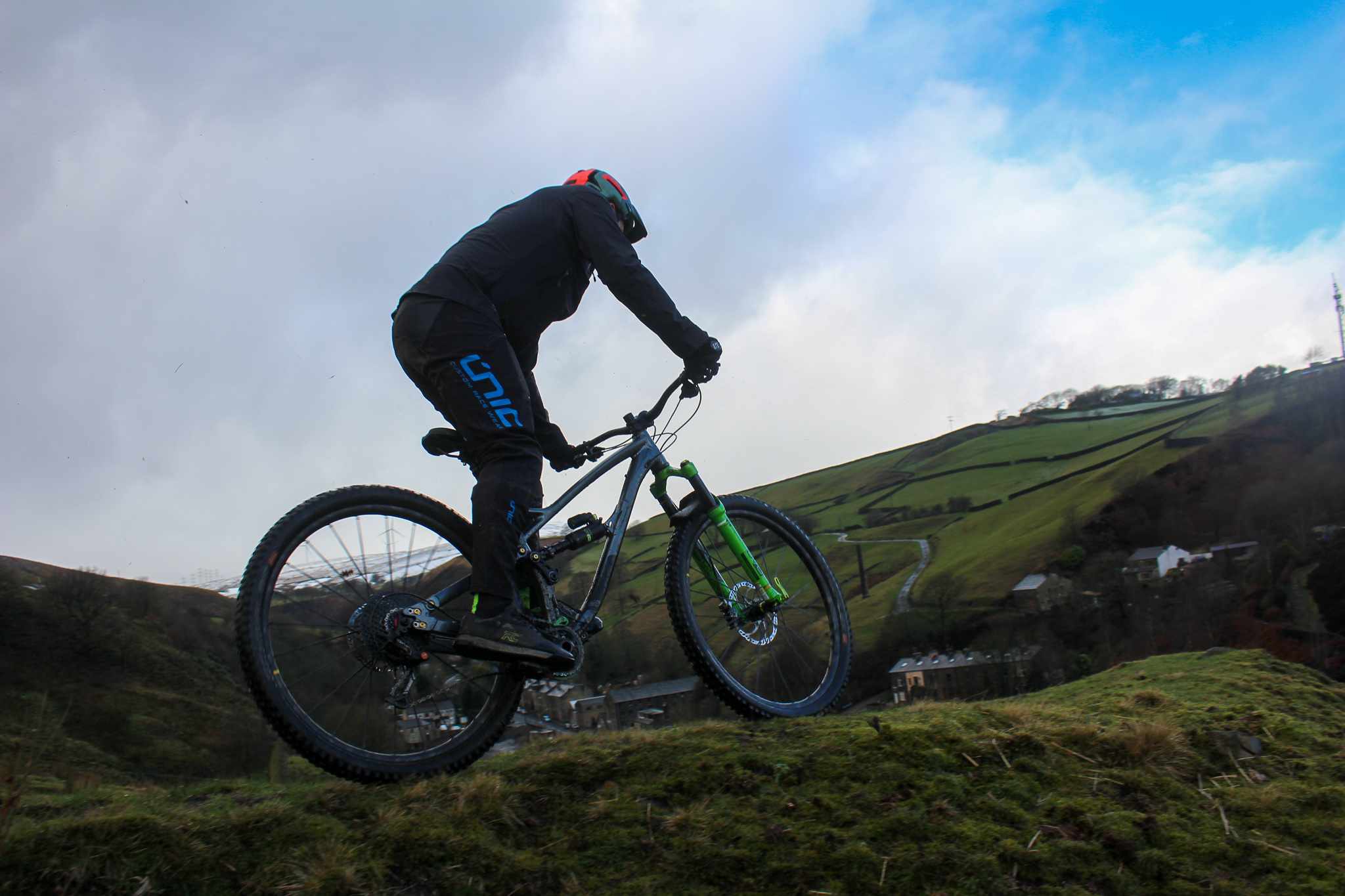
With the 29er in the rear, my weight moved over the front a little and this appeared to help with the active rear suspension, but I still needed to make ample use of the shock lever for efficient climbing progress. Still, the seat tube isn’t as steep as other bikes in my collection, and I never really felt that climbing on the Lone was fast, more of a slow steady uphill ride.
When descending on faster, rocky trails the short reach and narrow bar that help with fast fun direction changes also tended to make the Parabellum feel a little twitchy. Swapping to a wider bar improved this, but the bike never feels like a plough. You have to pick your lines carefully, and you’ll want to skip over rather than charge through technical sections.
The Lone is very much a poppy and playful bike trail bike, it isn’t an enduro or freeride machine and as such you need to take a slightly different approach when riding it.
Lone Parabellum – Things I Loved
- An innovative approach to standards.
- Incredible attention to detail.
- Fun trail bike handling.
Lone Parabellum – Things that could be improved
- Handling tends to get twitchy if pushed in more aggressive riding conditions.
- It would be great to have shorter seat tubes so that I could have tried the longer reach bike.
- A wider handlebar improves handling.
Lone Parabellum – Overall
If you’re the type of rider who wants to seek out the steepest trails, biggest jumps and drops then the Lone Parabellum probably isn’t going to be the right bike for you. If you prefer sessioning fun flow sections, forest berms, and taking gnarly lines as smoothly and as accurately as possible, then the Parabellum should be right up your street.
Lone Parabellum – Specifications
- Frame // Lone Bicycles Parabellum
- Shock // DVO Topaz
- Fork // DVO Diamond
- Wheelset // Mavic DeeMax Pro Sam Hill Edition 29in and 27.5in
- Rear Mech // Box One
- Shifter // Box One
- Crank // HXR Easyshift
- Brakes // Magura with HC3 adjustable lever
- Dropper // Funn
- Bar // HXR
- Stem // Production Privée
- Grips // HXR
- Sizes // S,M,L
- Price // Frame only €1749. Frame with DVO Topaz €1999
- From // Lone Bicycles





